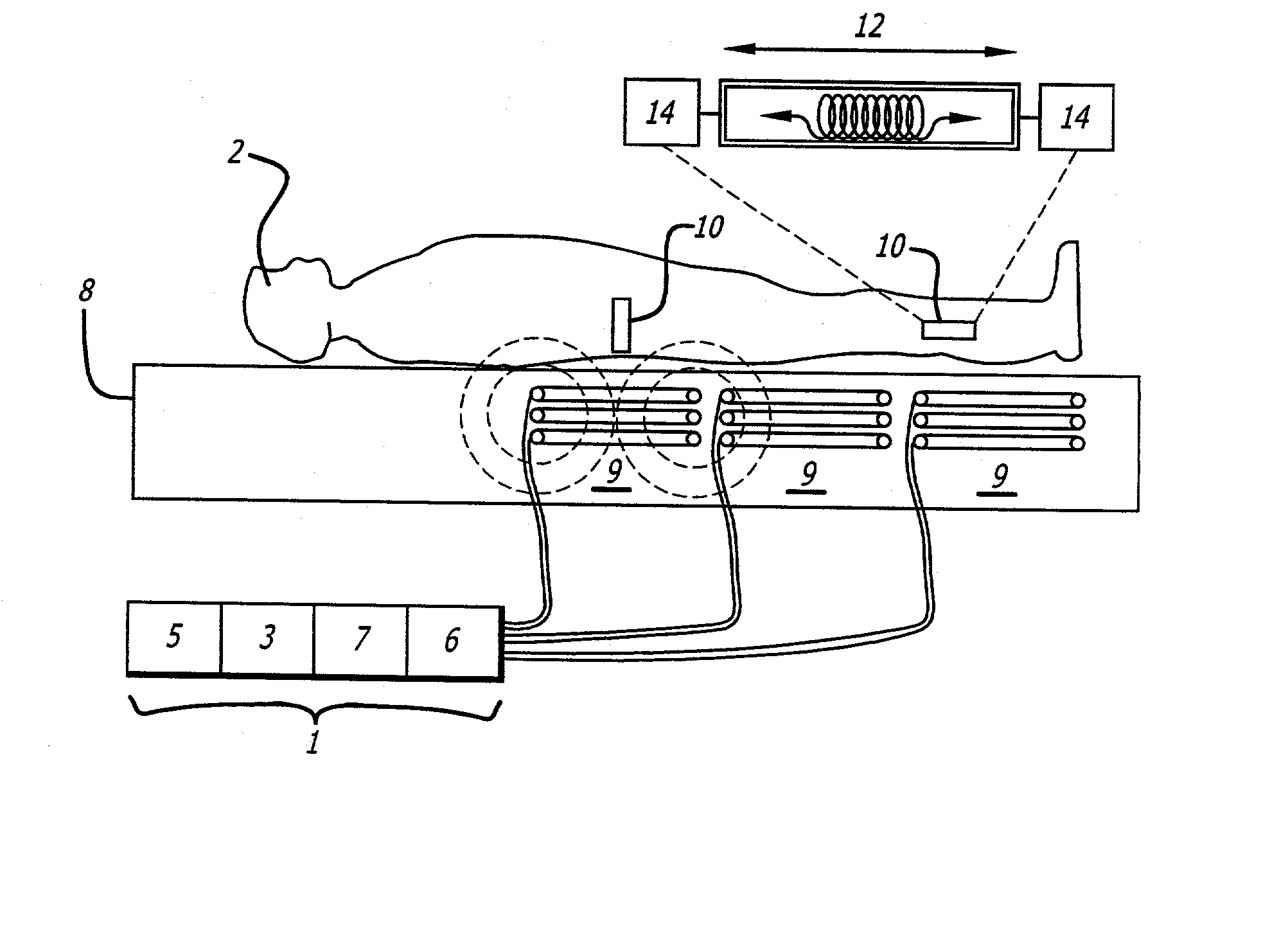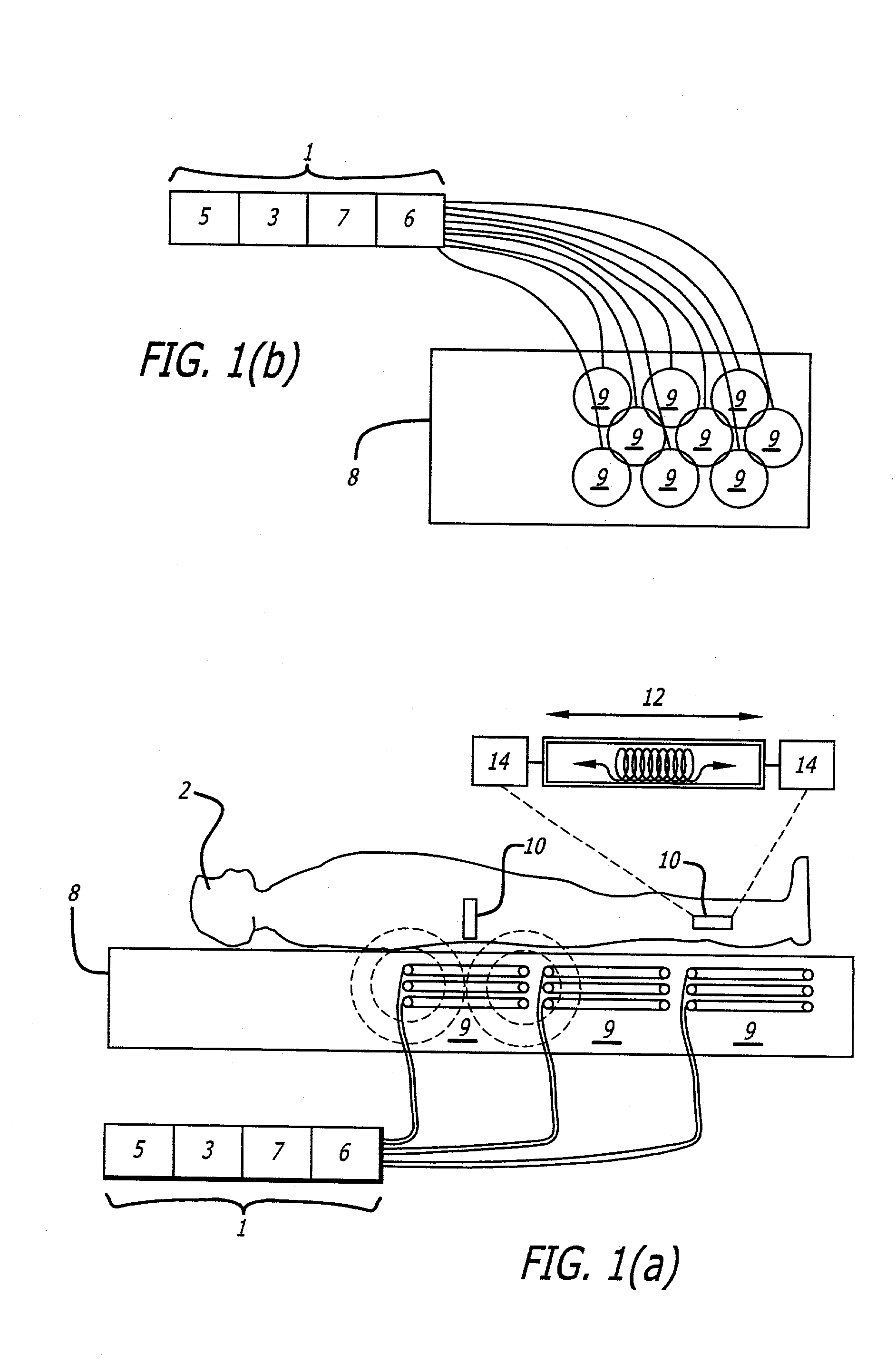Method and apparatus for conditioning muscles during sleep
a technology of muscle conditioning and sleep, applied in the field of medical systems for the treatment of atrophied or spastic muscles, can solve the problems of muscle atrophy and imbalance, difficulty or inability to exercise particular muscles to build strength or reduce spasticity, paralysis, weakened and/or spastic muscles,
- Summary
- Abstract
- Description
- Claims
- Application Information
AI Technical Summary
Problems solved by technology
Method used
Image
Examples
Embodiment Construction
[0024] FIG. 1 shows a schematic of an exemplary embodiment of the system of the invention, which are divided between an external component 1 and one or more implants 10 that are advantageously located in or near the nerve(s) or muscle(s) to be electrically stimulated within patient 2.
[0025] Implanted electronic devices 10 each consist of a hermetically sealed capsule 12 in which are located electronic circuitry and to which are attached a pair of electrodes 14. Said electronic circuitry will typically include an inductive coil, power storage capacitor, and integrated circuit for performing various functions as detailed below and illustrated schematically in FIG. 2. Upon command from the external component 1, an implanted electronic device 10 emits an electrical stimulation pulse that travels through the body tissues between and around its electrodes 14, thereby activating local nerve fibers as required. By selecting appropriately the strength and temporal patterning of such stimulat...
PUM
 Login to View More
Login to View More Abstract
Description
Claims
Application Information
 Login to View More
Login to View More - R&D
- Intellectual Property
- Life Sciences
- Materials
- Tech Scout
- Unparalleled Data Quality
- Higher Quality Content
- 60% Fewer Hallucinations
Browse by: Latest US Patents, China's latest patents, Technical Efficacy Thesaurus, Application Domain, Technology Topic, Popular Technical Reports.
© 2025 PatSnap. All rights reserved.Legal|Privacy policy|Modern Slavery Act Transparency Statement|Sitemap|About US| Contact US: help@patsnap.com



